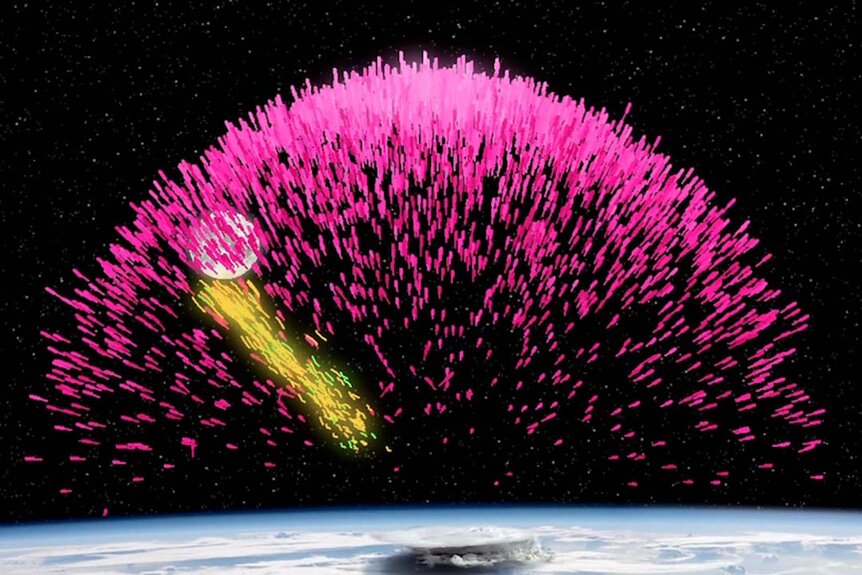Create a free profile to get unlimited access to exclusive videos, sweepstakes, and more!
Dark lightning is the most powerful natural radiation on Earth and it’s totally invisible
Now we have to worry about invisible radiation lightning.

Before the Marvel Cinematic Universe brought all of our favorite heroes into one shared (but increasingly fractured) reality, we had to be satisfied with standalone films. Only a year after Sam Raimi’s first Spider-Man film and a few years after Blade and X-Men launched the modern era of superhero films, Ang Lee presented his version of the Hulk.
Hulk (streaming now on Peacock!) gave us the origin story of one Bruce Banner, a scientist with a shady past he hardly remembers. Through a combination of modified DNA and exposure to gamma radiation, Banner transforms into the titular green-skinned rage monster we all know and love. Of course, exposure to gamma radiation is so rare that most of us will never need to wonder about how it might impact our lives, right? Well, maybe. Exposure to gamma radiation might be a little more common than we previously thought, according to findings presented at the American Geophysical Union’s fall meeting.
We all know that thunderstorms can unleash incredible bursts of electricity in the form of lightning, but you may not have known that thunderstorms also generate invisible bursts of gamma radiation known as dark lightning. Otherwise known as terrestrial gamma ray flashes (TGFs), dark lightning was first discovered in 1994 by detectors on the Compton Gamma Ray Observatory, a space-based telescope launched by NASA.
RELATED: A dying star produced the most powerful cosmic blast we've ever seen
The telescope picked up gamma ray sources coming from Earth and set about explaining what they were and where they were coming from. At the time, scientists estimated that TGFs occurred at altitudes of at least 30 kilometers high and were a rare type of electrical discharge generated by thunderstorms. In the intervening years, some of those early hypotheses were confirmed while others were refined. We now know that TGFs are even more common, occurring somewhere in the world about a thousand times per day, at as low as ten kilometers above the Earth’s surface. That’s low enough to present some risk to passing airplanes.
Precisely how these gamma ray bursts are generated isn’t wholly understood, but one hypothesis suggests that thunderstorms and lightning strikes create charged electric fields capable of accelerating electrons to near the speed of light. When those electrons smash into other atoms in the atmosphere, gamma radiation is produced by the collision.
In a new analysis, scientists compared the estimated frequency of dark lightning all over the world with common airline routes. They used that data to estimate the probability that a flight could be struck by dark lightning, potentially exposing passengers to gamma radiation. That analysis suggests that dark lightning could strike a plane roughly once every one to four years. It’s worth noting that those estimates are based on the background rate of dark lightning and uninterrupted flights. In reality, the actual overlap is probably much lower, thanks to pilots’ tendencies to avoid thunderstorms.
All things being equal, every few years a plane should get hit by dark lightning. Simulations suggest that passengers inside a plane passing within 200 meters of a TGF could be exposed to 0.3 sieverts of radiation in the blink of an eye. That’s 1.5 times the safe recommended dosage of radiation for an entire year. A single flash of dark lightning delivers an equivalent of about 30 CT scans to the entire body. That’s about a third of the dose needed to experience radiation sickness in the average person, but it’s more than enough to increase an individual’s probability of developing fatal cancer.
On second thought, all things considered Bruce Banner got off light. He gets to fight interstellar crime with the Avengers while the rest of us only get a slightly higher lifetime cancer risk every time we fly through a summer storm.
Check out the even more improbable events preceding a lightning strike in the 2013 comedy Struck by Lightning, streaming now on Peacock.



























